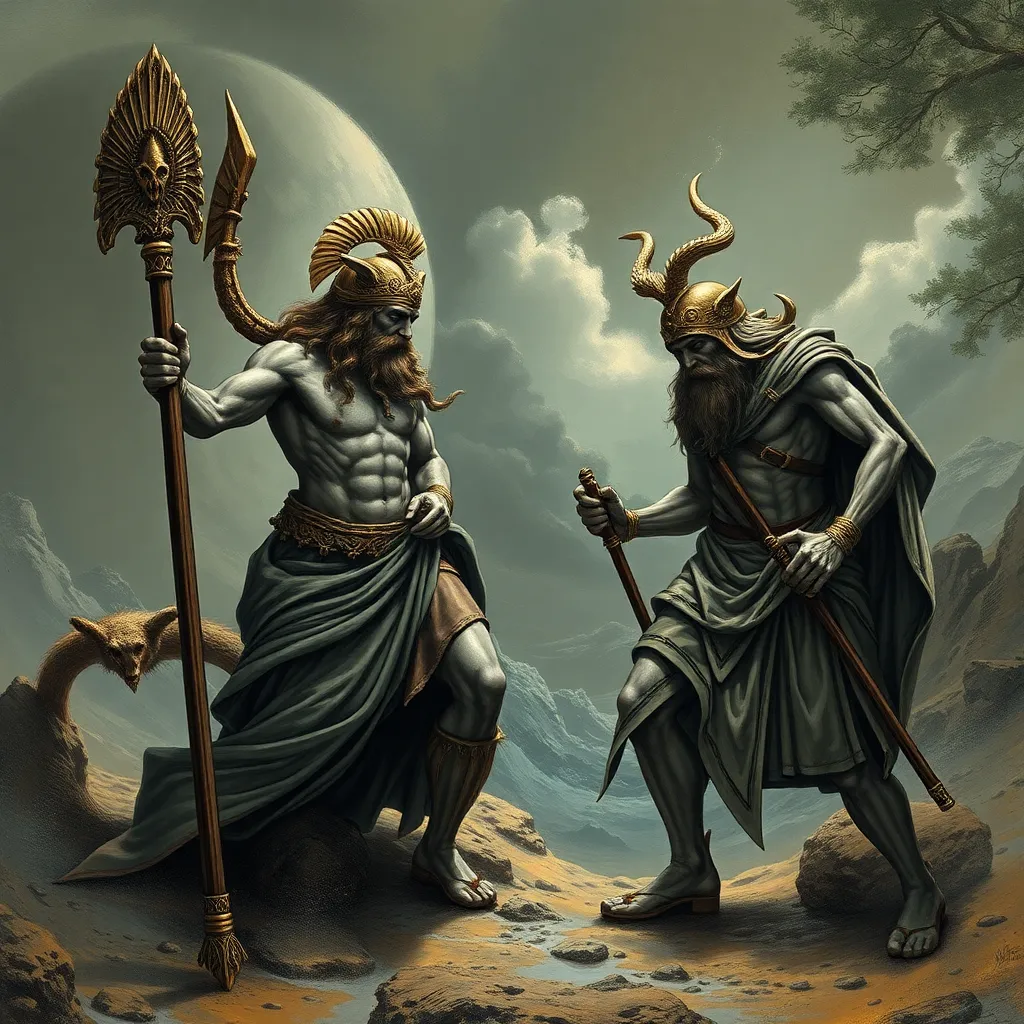The Odyssey and the Nature of Evil: Analyzing the Antagonists
I. Introduction
“The Odyssey,” attributed to the ancient Greek poet Homer, stands as one of the most significant works in Western literature. This epic poem narrates the adventurous journey of Odysseus as he strives to return home to Ithaca after the Trojan War. The tale is not solely a story of adventure; it also delves deeply into themes of morality, fate, and the nature of evil.
Within the context of “The Odyssey,” evil can be defined as actions or forces that oppose the hero, challenge moral values, and disrupt the order of society. The purpose of this article is to explore the nature of the antagonists in “The Odyssey” and how they embody various aspects of evil, rivalry, and conflict in the epic.
II. The Role of Antagonists in Epic Literature
Antagonists play a crucial role in epic literature, serving as the primary opposition to the hero’s journey. Their presence not only amplifies the hero’s virtues but also provides a canvas upon which the moral and philosophical themes of the story are painted.
- Understanding the function of antagonists: They create conflict that propels the narrative forward and challenges the hero to grow.
- The relationship between heroes and their adversaries: This dynamic often leads to a deeper understanding of the hero’s character and motivations.
- Moral and philosophical implications: Antagonists often embody the darker aspects of human nature, prompting reflections on morality and ethics.
III. Poseidon: The God of the Sea
Among the many antagonists in “The Odyssey,” Poseidon, the god of the sea, stands out due to his divine power and personal vendetta against Odysseus. Poseidon harbors a grudge against the hero for blinding his son, the Cyclops Polyphemus.
- Poseidon’s grudge against Odysseus: This personal conflict exemplifies the themes of revenge and justice in the epic.
- Analysis of divine intervention: Poseidon’s actions demonstrate the moral consequences of divine whims and the unpredictability of fate.
- Representation of nature’s chaotic forces: Poseidon symbolizes the untamed aspects of nature, reflecting the unpredictability and danger inherent in the natural world.
IV. The Suitors: Human Antagonists
The suitors in “The Odyssey” serve as the primary human antagonists. They invade Odysseus’s home, feasting and courting his wife, Penelope, while demonstrating a blatant disregard for hospitality—an essential virtue in ancient Greek culture.
- Characterization: The suitors are depicted as arrogant, selfish, and morally corrupt, embodying the negative traits that lead to societal decay.
- Moral corruption and disregard for hospitality: Their behavior signifies a violation of social norms, which ultimately leads to their downfall.
- Reflection of societal decay: The suitors represent the dangers of greed and entitlement, showcasing the consequences of a society that strays from its ethical foundations.
V. Circe and the Sirens: Feminine Representations of Evil
In “The Odyssey,” female figures such as Circe and the Sirens embody complex representations of evil, blending allure with destruction.
- Circe’s portrayal: Initially depicted as a seductive enchantress, Circe represents the dangers of temptation, using her powers to transform Odysseus’s men into animals.
- The Sirens as symbols of temptation: Their enchanting songs lure sailors to their doom, embodying the destructive potential of desire.
- Duality of female antagonists: While they represent evil, they also reflect the complexities of femininity, showcasing both danger and empowerment.
VI. Scylla and Charybdis: The Monsters of the Sea
Odysseus’s journey is fraught with peril, notably from the monstrous Scylla and Charybdis, who symbolize the fears and dangers that lie in wait for any hero.
- Description and symbolism: Scylla, a multi-headed monster, and Charybdis, a whirlpool, represent the dual threats of physical danger and inevitable peril.
- The nature of fear: They embody the internal struggles of fear and decision-making, emphasizing the difficulty of navigating through life’s challenges.
- Internal and external conflicts: The monsters symbolize the external dangers Odysseus faces, as well as the internal fears that challenge his resolve.
VII. The Role of Fate and Free Will in Confronting Evil
The interplay between fate and free will is a central theme in “The Odyssey.” While the gods, including Poseidon, exert significant influence over Odysseus’s journey, his choices ultimately shape his destiny.
- Fate and human agency: Odysseus’s encounters with antagonists are often a result of his decisions, illustrating the balance between fate and free will.
- Impact of Odysseus’s choices: His cleverness and determination allow him to confront evil effectively, showcasing the importance of human agency.
- Philosophical reflections: The epic raises questions about the nature of evil and morality, prompting readers to consider the consequences of their choices.
VIII. Conclusion
In conclusion, “The Odyssey” presents a rich tapestry of antagonists, each embodying different facets of evil and moral conflict. From the wrath of Poseidon to the temptations of Circe and the Sirens, these characters challenge Odysseus and illustrate the complexities of human nature.
The themes of evil and morality explored in the epic remain relevant today, inviting readers to reflect on their own struggles against temptation and adversity. Ultimately, “The Odyssey” teaches valuable lessons about the human condition, the nature of good and evil, and the importance of courage and integrity in confronting life’s challenges.




